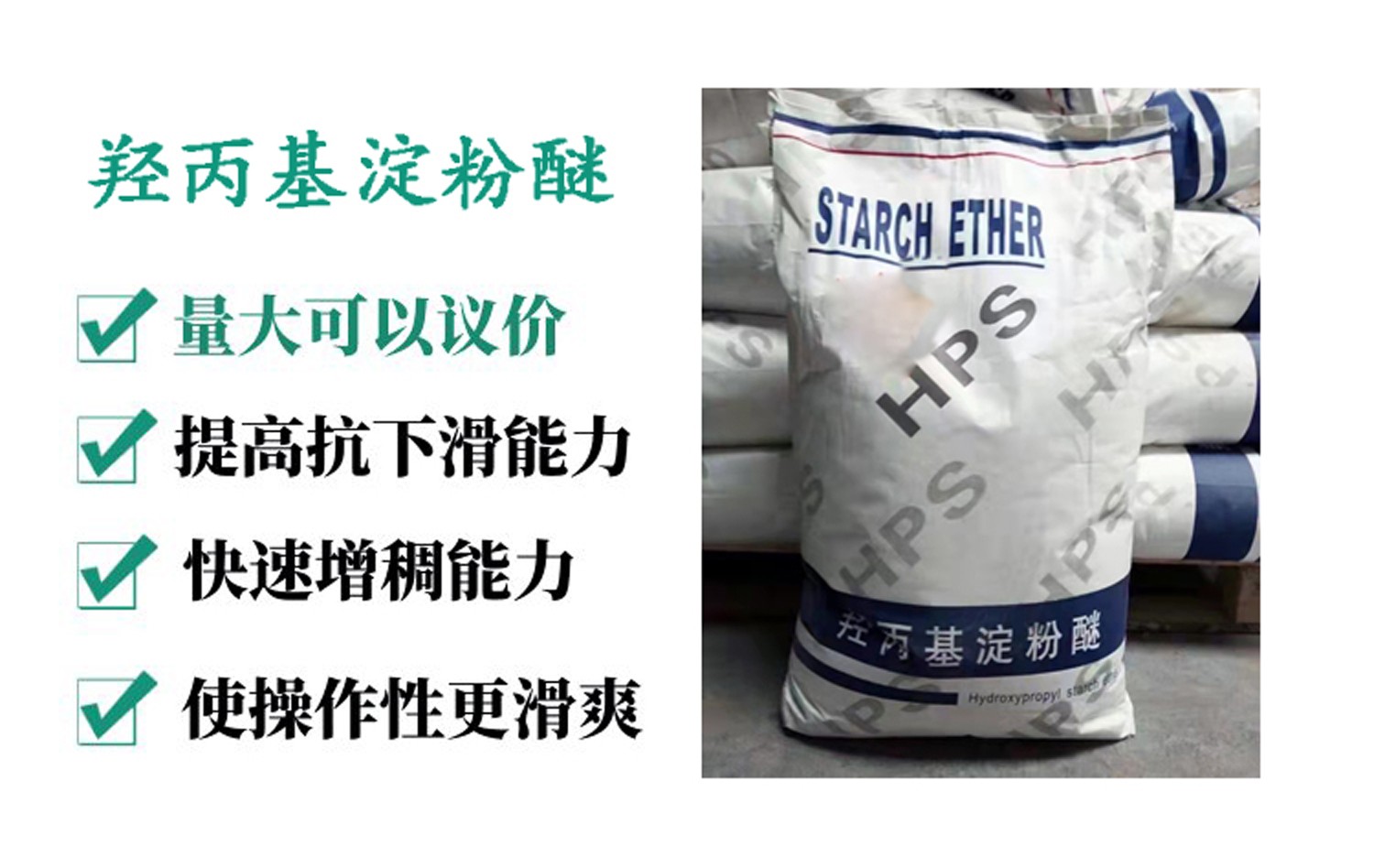Have you really figured out the role of starch ether in mortar?
Starch ether is a general term for a type of modified starch with ether bonds in its molecules, also known as etherified starch. It is widely used in industries such as medicine, food, textiles, papermaking, daily chemicals, and petroleum. Today we will mainly explain the role of starch ether in mortar.
Introduction to Starch Ether
Common and commonly used are potato starch, tapioca, corn starch, wheat starch, etc. Compared with cereal starch with high fat and protein content, starch of rhizome crops such as potato and tapioca starch is more pure.
Starch is a polysaccharide polymer compound composed of glucose, which has two types of molecules: linear and branched, called amylose (with a content of about 20%) and branched starch (with a content of about 80%). In order to improve the properties of starch in building materials, physical and chemical methods can be used to modify it, making its properties more suitable for the needs of different building materials.
Etherified starch includes various types of products. For example, carboxymethyl starch ether (CMS), hydroxypropyl starch ether (HPS), hydroxyethyl starch ether (HES), cationic starch ether, etc. The commonly used hydroxypropyl starch ether.
The role of starch ether in mortar
1) Thickening mortar to increase its resistance to sagging, sagging, and rheological properties
For example, in the construction of ceramic tile adhesive, putty, and plastering mortar, especially now mechanical spraying requires high fluidity, which is particularly important in gypsum based mortar (machine sprayed gypsum requires high fluidity but can cause serious sagging, and starch ether can compensate for this defect).
Liquidity and anti sagging properties are often contradictory, and an increase in liquidity can lead to a decrease in anti sagging properties. Mortar with rheological properties can effectively solve the contradiction that when external forces are applied, the viscosity decreases, enhancing the workability and pumpability. When external forces are withdrawn, the viscosity increases, improving the resistance to sagging.
For the current trend of increasing ceramic tile area, adding starch ether can improve the slip resistance of ceramic tile adhesive.
2) Extend opening hours
For ceramic tile adhesive, it can meet the requirements of special ceramic tile adhesive (Class E, extended from 20 minutes to 30 minutes to reach 0.5 MPa) that extends the opening time.

Surface performance improvement
Starch ether can make the surface of gypsum based and cement mortar smooth, easy to apply, and have good decorative effects. It is very meaningful for plastering mortar and thin layer decorative mortar such as putty.
The mechanism of action of starch ether
When starch ether is dissolved in water, it will be evenly dispersed in the cement mortar system. Due to the network structure and negative charge of starch ether molecules, it will absorb positively charged cement particles. As a transition bridge, it can connect the cement and give the slurry a larger yield value, improving its resistance to sagging or sliding.
The difference between starch ether and cellulose ether
1. Starch ether can effectively improve the anti sagging and anti slip properties of mortar
Cellulose ether can usually only improve the viscosity and water retention of the system, but cannot improve its anti sagging and anti slip properties.
2. Thickening and viscosity
The viscosity of cellulose ether is generally around tens of thousands, while the viscosity of starch ether is in the hundreds to thousands. However, this does not mean that the thickening effect of starch ether on mortar is not as good as that of cellulose ether, as the thickening mechanisms of the two are different.
3. Anti slip performance
Compared with cellulose ether, starch ether can significantly increase the initial yield value of ceramic tile adhesive, thereby improving its anti slip performance.
4. Air entrainment
Cellulose ether has strong air entrainment, while starch ether has no air entrainment.
5. Molecular structure of cellulose ether
Although starch and cellulose are both composed of glucose molecules, their composition is different. The orientation of all glucose molecules in starch is consistent, while cellulose is exactly the opposite, with each adjacent glucose molecule having opposite orientation. This structural difference also determines the differences in the properties of cellulose and starch.
The combination of cellulose ether and starch ether can achieve good synergistic effects. Experiments have shown that using starch ether instead of 20% to 30% cellulose ether in mortar can not reduce the water retention capacity of the mortar system, but effectively improve the resistance to sagging and sliding.
{aspcms:comment}





